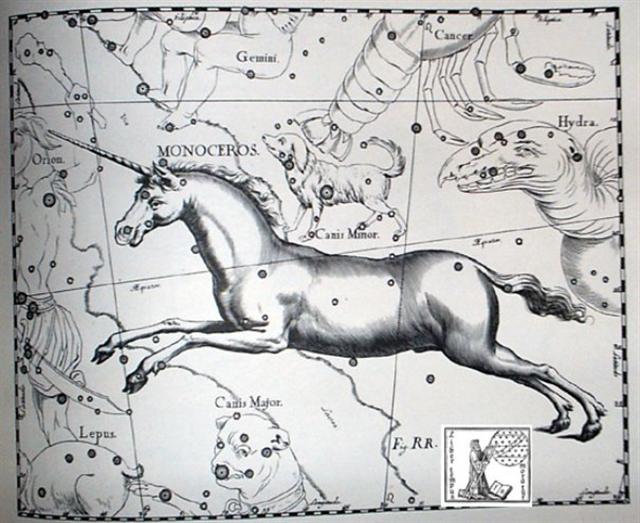93. To repeat. The Mayas had a drum
month (Paxi) ending with day number 320, and each of
their months carried 20 days. 16 * 20 = 320, and 20 + 20 + 5 =
45 = 365 - 320.
 |
 |
 |
 |
|
13
Mac (260) |
14
Kankin |
15
Moan (300) |
|
BREAK (paxih) |
 |
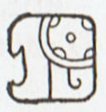 |
 |
 |
|
16 Pax (320) |
17
Kayab |
18 Cumhu |
19
Vayeb (365) |
|
... The [tun]
glyph is nearly the
same as that for the
month Pax ...
except that the top
part of the latter
is split or divided
by two curving
lines. Brinton,
without referring to
the Pax
glyph, identified
the tun glyph
as the drum called
in Yucatec pax
che (pax
'musical
instrument'; che
< *te
'wooden). Yucatec
pax means
'broken,
disappeared', and
Quiche paxih
means, among other
things, 'split,
divide, break,
separate'. It would
seem that the
dividing lines on
the Pax glyph
may have been used
as a semantic/
phonetic
determinative
indicating that the
drum should be read
pax, not
tun ... Thus,
one may expect that
this glyph was used
elsewhere meaning
'to break' and
possibly for
'medicine' (Yuc.
pax, Tzel., Tzo.
pox) ... It
should be added that
tun was also
the period of 18
months, or 360 days
... |
|
... The ground, the
food-giving earth,
was Pachamama;
the moon,
Paximama
...
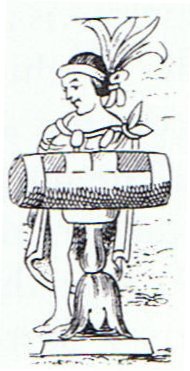
... The tun
glyph was identified
as a wooden drum by
Brinton ... and
Marshal H. Saville
immediately accepted
it ... [the figure
above] shows the
Aztec drum
representation
relied on by Brinton
to demonstrate his
point. It was not
then known that an
ancestral Mayan word
for drum was *tun:
Yucatec tunkul
'divine drum' (?);
Quiche tun
'hollow log drum';
Chorti tun
'hollow log drum'
...
 |
From the end of the Paxi
(break)
there were 45
(→ 360 / 8) days to the end of the Sun year.
This place can be said to
correspond to right
ascension day *320.
 |
 |
|
Gb1-26
(355
-
100) |
Gb2-1 (216
+ 40
= 256
→
8
*
32) |
|
PLACE
OF
THE
SUN |
|
21h
(319.6)
→
137.0
+
365.25
/ 2
=
319.6
ARMUS
= η
Capricorni
(319.0),
DORSUM
= θ
Capricorni
(319.3),
TSOO
= 24
Capricorni
(319.7) |
DRAMASA =
σ
Oct.,
χ Capricorni
(320.0),
ν
Aquarii
(320.3),
γ
Equulei (320.6),
ο
Pavonis (320.8) |
|
Febr
3
(399) |
4 (400
-
365
= 35) |
|
°Jan
30
(*315) |
31 (396) |
|
'Jan
7
(*292) |
8 (373) |
|
CHRISTMAS
EVE
(*278) |
"Dec 25 (359) |
|
DEC
1
(355
-
20) |
2 (336
→ 4
* 84) |
|
... only at the
evening of the solstitial days can spirits enter heaven, the
inhabitants of the northern parts of the island at one solstice,
the dwellers in the south at the other ...
According to the Julian calendar the spring
equinox was at day 84 ('March 25) and therefore we should
understand the corresponding winter solstice to be at 'December
25. 359 + (41 - 27) = 373 →
'January 8. |
|
THE NAKSHATRA
VIEW: |
|
9h
(137.0)
σ¹
Ursa
Majoris
(137.0),
κ
Cancri
(137.3),
τ
Cancri
(137.4),
ALSUHAIL
(al
Wazn,
of
the
Weight)
=
λ in
the
Vela
(Sail)
a part
of
Argo
Navis
(137.5),
σ²
Ursa
Majoris
(137.6),
τ
Ursa
Majoris
(137.7),
ξ
Cancri
(137.8)
*96.0
=
*137.4
-
*41.4 |
κ
in
the
Pyxidis
(Mariner's
Compass)
a part
of Argo
Navis
(138.0),
ε
(138.5) |
|
Aug
5 |
6
(218
=
400
-
182) |
|
"June
25
(217
-
41) |
26
(177
= 6
*
29½)
|
|
JUNE
2
(153
=
176
-
23) |
3
(218
-
64) |
 |
 |
|
Ga3-13 |
Ga3-14
(73
=
256
-
183) |
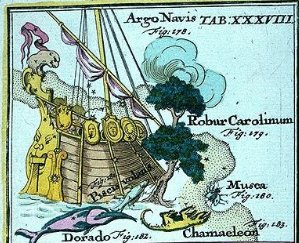
... According to a variety of
sources of the legend, the Argo was said to
have been planned or constructed with the help of
Athena. According to other legends it contained
in its prow a magical piece of timber from the
sacred forest of Dodona, which could speak
and render prophecies. Argo Navis is the only
one of the 48 constellations listed by the 2nd
century astronomer Ptolemy that is no longer
officially recognised as a constellation. It was
unwieldy due to its enormous size: were it still
considered a single constellation, it would be the
largest of all. In 1752, the French astronomer
Nicolas Louis de Lacaille subdivided it into
Carina (the keel, or the hull, of the ship),
Puppis (the poop deck), and Vela (the
sails). When Argo Navis was split, its Bayer
designations were also split. Carina has the
α, β
and ε, Vela has
γ and δ,
Puppis has ζ, and
so on. The constellation Pyxis (the mariner's
compass) occupies an area which in antiquity was
considered part of Argo's mast (called
Malus).
However, Pyxis is not now considered part of
Argo Navis, and its Bayer designations are
separate from those of Carina, Puppis
and Vela ... |
But in the Gregorian calendar day 65 is March 6, and in the
next evening AD 2024 we have a prediction from Cartes du
Ciel that Mars will be visible immediately after having left
ι Capricorni, also denoted 32 Capricorni. And on the
other side of the year was the Nose of
the Lion:
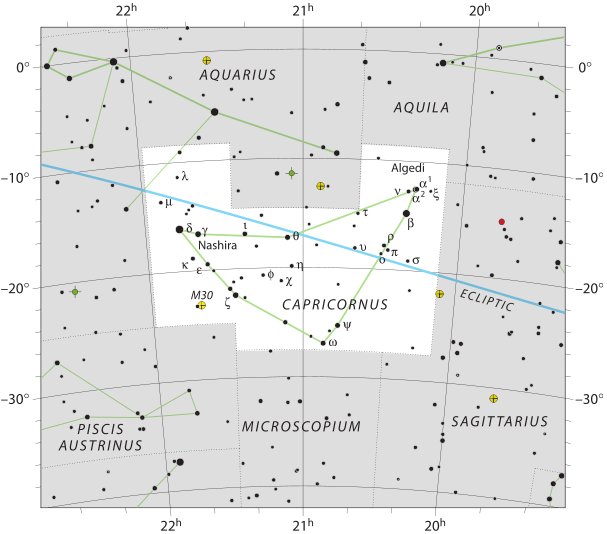
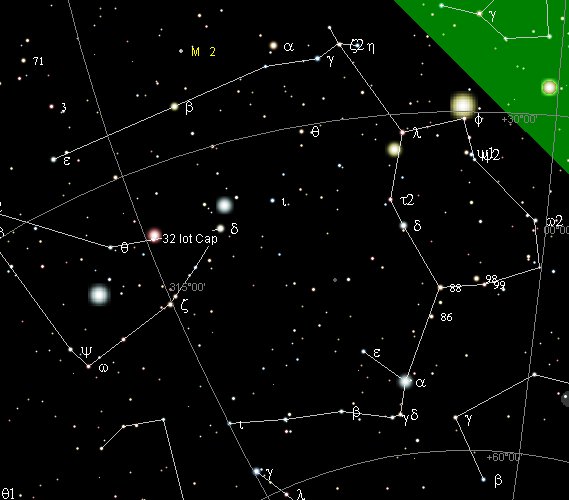
 |
 |
 |
 |
|
Gb2-2 |
Gb2-3 (29) |
Gb2-4 |
Gb2-5
(260) |
|
PLACE OF THE SUN |
|
α
Oct. (321.5),
δ
Equulei
(321.7),
Φ Capricorni
(321.8)
|
KITALPHA (Part of a Horse) =
α
Equulei
(322.0),
ALDERAMIN (The Right Arm) = α Cephei
(322.9) |
DAI = ι Capricorni (323.5),
β
Equulei
(323.8) |
γ
Pavonis
(324.1),
YAN = ζ Capricorni
(324.6)
March
7 AD 2024 (66) MARS |
|
Febr 5 (36) |
6 |
7 (403) |
8 (*324) |
|
°Febr 1 |
2 |
3
(399) |
4 (*320) |
|
'Jan 9 |
10 (*295) |
11 |
12 (377) |
|
"Dec 25 (*280) |
26 |
27 |
28 (363) |
|
DEC 3 |
4 |
5 (339) |
6
(*260) |
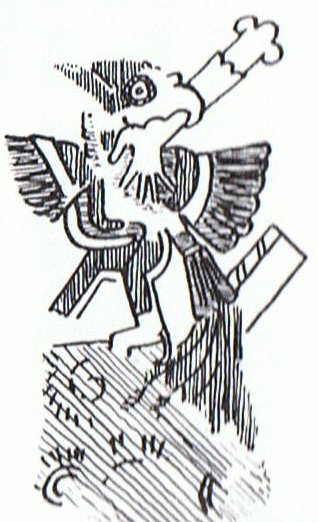 |
|
THE NAKSHATRA
VIEW: |
|
π
Cancri
(139.2),
MIAPLACIDUS =
β
Carinae
(139.3),
TUREIS (Little Shield) =
ι
Carinae
(139.8) |
No star listed (140) |
θ
Pyxidis,
MARKAB VELORUM =
κ
Velorum
(141.5),
AL MINHAR AL ASAD (The Nose of the Lion) = κ Leonis
(141.6),
λ
Pyxidis
(141.9) |
Star-25 (Horse)
/
ANA-HEU-HEU-PO-5 (Pillar where
debates were held)
ALPHARD (The Horse) =
α
Hydrae
(142.3),
ω
Leonis
(142.6),
τ¹ Hydrae
(142.7) |
|
Aug
7 |
8 (220) |
9 (*141) |
10 |
|
"June
27 |
28 |
29 (*100) |
30 |
|
JUNE 4 |
5 (156) |
6
(*77) |
7 |
 |
 |
 |
 |
|
Ga3-16 |
Ga3-17 |
Ga3-18 (77) |
Ga3-19 |
 |
The place in the G text which then ought to correspond to the
beginning of the drum month, Pax, should be at
*300:
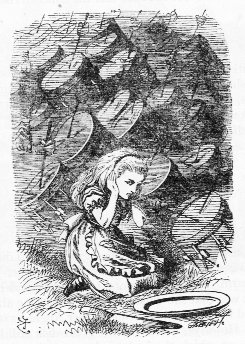
In the evening of February 20 AD 2024 the planet Mars can, according to Cartes du Ciel, be observed together with Venus on their way to enter the figure of Capricornus.
In the G text this place (Gb1-17,
246 = 2 * 123) corresponds to 14 days before glyph number
2 * 130 = 260, i.e. Gb2-5.
But 66 (March 7) - 51
(February 20) = 15.
Unless we should count
with a leap year day at
February 29, in which
case the difference
becomes 16 days.
... A
sidelight falls upon the
notions connected with
the stag by Horapollo's
statement concerning the
Egyptian writing of 'A
long space of time: A
Stag's horns grow out
each year. A picture of
them means a long space
of time.' Chairemon
(hieroglyph no. 15,
quoted by Tzetzes) made
it shorter: 'eniautos:
elaphos'. Louis
Keimer, stressing the
absence of stags in
Egypt, pointed to the
Oryx (Capra Nubiana)
as the appropriate
'ersatz', whose head
was, indeed, used for
writing the word rnp
= year, eventually in
'the Lord of the Year',
a well-known title of
Ptah. Rare as this modus
of writing the word
seems to have been - the
Wörterbuch der
Aegyptischen Sprache
(eds. Erman and Grapow),
vol. 2, pp. 429-33, does
not even mention this
variant - it is worth
considering (as in every
subject dealt with by
Keimer), the more so as
Chairemon continues his
list by offering as
number 16: 'eniautos:
phoinix', i.e.,
a different span of
time, the much-discussed
'Phoenix-period' (ca.
500 years) ...

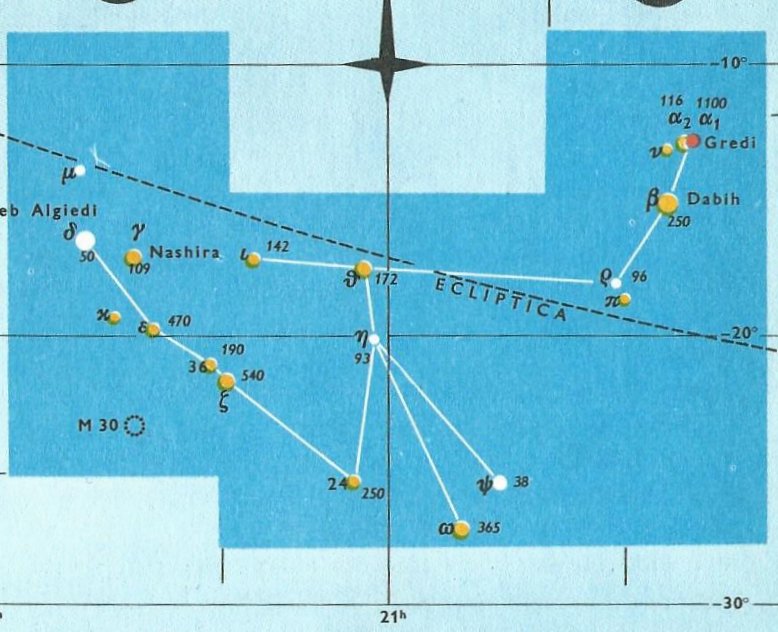
 |
 |
 |
 |
 |
 |
| Gb1-14 |
Gb1-15 |
Gb1-16 |
Gb1-17 (2 * 123) |
Gb1-18 |
Gb1-19 (248) |
| GREDI (Goat) = α Capricorni (307.2), σ Capricorni (307.5), ALSHAT (The Sheep) = ν Capricorni (307.9) |
Al Sa’d al Dhabih-20 (Lucky One of the Slaughterers) / Ox / Heard Boy (Buffalo)
DABIH = β Capricorni (308.0), κ Sagittarii (308.1), SADIR (Hen's Breast) = γ Cygni (308.4), PEACOCK = α Pavonis (308.7)
*267.0 = *308.4 - *41.4 |
KHUFU
MINTAKA (δ Orionis)
ARNEB (α Leporis)
OKUL = π Capricorni (309.6), BOS = ρ Capricorni (309.9( |
KHAFRE
ο Capricorni (310.2), θ Cephei (310.5)
ALNILAM (ε Orionis)
HEKA (λ Orionis)
Febr 20 AD 2024 MARS |
MENKAURE
ALNILAK (ζ Orionis)
PHAKT (α Columbae)
ROTTEN MELON = ε Delphini, φ Pavonis (311.2), η Delphini (311.4), ζ Delphini, ρ Pavonis (311.7)
*270.0 = *311.4 - *41.4 |
ROTANEV = β Delphini, ι Delphini (312.3), τ Capricorni (312.6), κ Delphini (312.7), SVALOCIN = α Delphini, υ Capricorni, υ Pavonis (312.8) |
 |
| Jan 22 |
23 (*308) |
24 |
25 → 21 + 4 |
26 (*311) |
27 (392) |
| °Jan 18 |
19 (*304) |
20 |
21 |
22 |
23 (388) |
| 'Dec 26 |
27 |
28 |
29 |
30 (364) |
31 (*285) |
| "Dec 12 |
13 |
14 (348) |
15 |
16 (*270) |
17 |
| NOV 19 |
20 (324) |
21 |
22 → π |
23 |
24 (*248) |
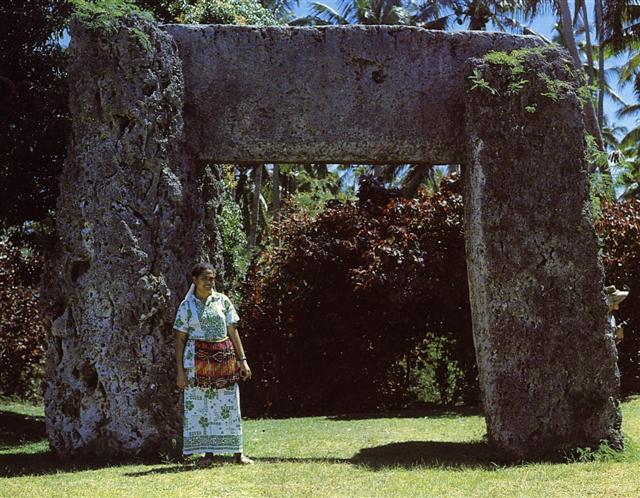 |
|
THE NAKSHATRA
VIEW: |
|
AL TARF (The End) = β Cancri (124.3)
RAS ALGETHI (α Herculis) |
χ Cancri (125.2), BRIGHT FIRE = λ Cancri (125.4)
*84.0 = *125.4 - *41.4 |
AVIOR = ε Carinae (126.4), φ Cancri (126.8)
*85.0 = *126.4 - *41.4 |
Ο Ursae Majoris (127.4)
*86.0 = *127.4 - *41.4 |
Pushya-8 (Nourisher)
υ Cancri (128.1), θ Cancri (128.2) |
Āshleshā-9 (Embrace) / Willow-24 (Stag)
π¹
Ursa Majoris,
δ
HYDRAE (129.6),
AL MINHAR AL SHUJĀ =
σ Hydrae,
MUSEIDA =
π²
Ursae Majoris
(129.9)
RAS ALHAGUE (α Ophiuchi) |
 |
 |
 |
 |
 |
 |
| Ga3-1 (60) |
Ga3-2 (61) |
Ga3-3 |
Ga3-4 |
Ga3-5 |
Ga3-6 (65) |
| MAY 20 (140) |
21 |
22 |
23 |
24 (12 * 12) |
MAY 25 (145) |
 |
My ambition to search for conjunctions between Mars and
the prominent stars is no longer keeping on track, instead we have
evidently been forced to also consider where Mars will be
crossing such lines which are creating the constellation figures.
Although beyond the culmination of the Khufu stars (Mintaka
and Arneb) Cartes du Ciel
should not have drawn a line down to
Ψ Capricorni
(*314).
...
string games could be
resumed after it was clear
that the Sun had managed to
leave the horizon and was
rapidly gaining in altitude:
'Before the sun starts to
leave the horizon ... when
it shows only on the
horizon, ... then string
games were no longer allowed
as they might lacerate the
sun. Once the sun had
started to go higher and
could be seen in its
entirety, string games could
be resumed, if one so
wished. So the restriction
on playing string games was
only applicable during the
period between the sun's
return and its rising fully
above the horizon ...
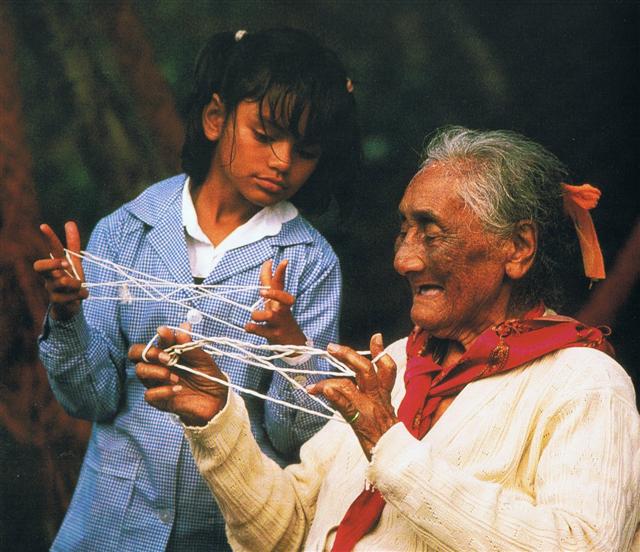
|




























